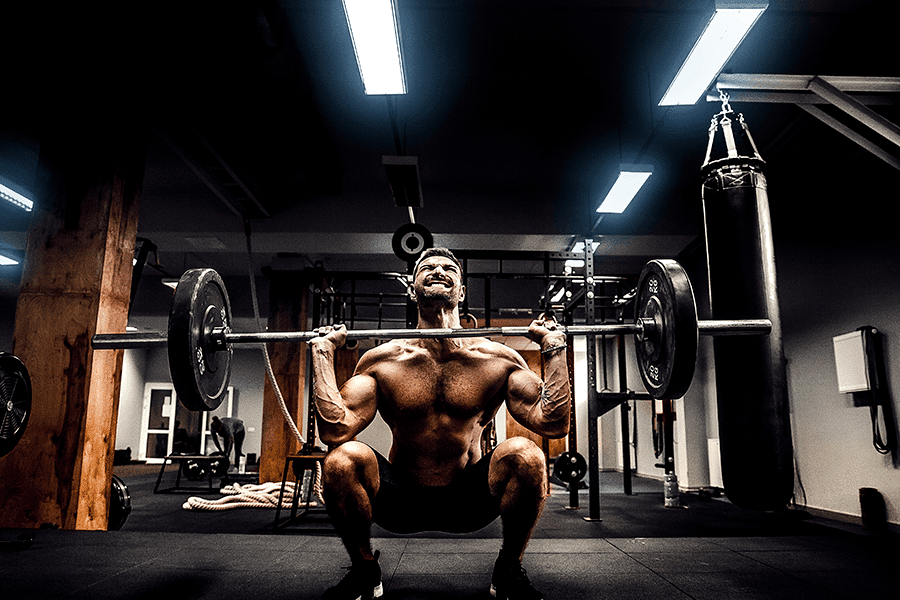Squats are a key exercise commonly suggested for athletes and fitness enthusiasts to improve strength, muscle tone, and flexibility. When done properly, the squat becomes one of the greatest weapons in your arsenal for improving strength and performance in many sports. Unfortunately, if your form is off, you can experience severe lower back pain after squats.
Lower back pain shouldn’t be something you expect when using squats in your training routine, and you don’t have to live with it. The National Strength and Conditioning Association Journal says, “While squatting results in high forces on the back, injury potential is low with appropriate technique and supervision.”
Squats are a coordinated effort between all of the lower body muscles and they do work the lower back muscles. However, if the lower back becomes the most targeted region during your squat, chronic soreness and overuse injury can occur.
Risk factors for back pain after squats
- Previous injury to the lower back
If you’re hurt, be sure and a supportive belt before attempting squats. Using a wider stance can also ease the pressure on your back.
- Poor technique
Before you begin your squat, make sure your feet are facing forward and your chest it up. Your weight should be on the heels and balls of your fee. Send your hips backwards as your knees begin to bend. Improper form is the number one cause of injury.
Get Back Your Normal Life Again
As pain specialists, we can guarantee that we are more than qualified in alleviating your pain and treating your condition.
- Weakness of core muscles
A strong core keeps stability throughout the body. Failing to engage the abs can lead to overarching or over rounding your back which can be a factor in injury. Use your abs to keep your back neutral throughout the exercise.
- Incorrect footwear
Wear a shoe with a minimal heel-to-toe drop, unlike running shoes. This will help keep your weight centered correctly and avoid knee injury
- Progressing weight too quickly
Only increase the weight you are lifting when you can hold good form for several repetitions. Lifting too much can cause strain leading to lower back pain.
- Squatting past your range of motion
No one’s hips are exactly the same. You may have a hip that is built to squat to parallel or below, or you may have a hip that is build to squat above parallel before running out of room. If you squat past your available range of motion, you will likely compensate in your back. This may result in soreness and injury.
Tips for pain free squats
- Use the proper stance
Squat with your heels shoulder width apart and align your hips directly above your heels. Turn your feet out 30 degrees and keep your whole foot flat on the floor.
- Use the right grip
When lifting, use a medium grip on the bar. It should be narrower than a bench press, but wider then your shoulders. Hold the bar firmly, but don’t try to support the weight with only your hands, rather let your upper back hold it.
- Watch your knees
Bend your knees over your feet, but be sure they don’t extend too far forward. You should still be able to see your toes when squatting.
- Keep your hips back
Bend your hips and knees at the same time. Move your hips back and down while pushing your knees out.
- Keep your back neutral
Squat with a natural arch like when you stand. Don’t round or overarch your lower back. Squeeze your shoulder blades together as you raise your chest.
- Use a few squat variations
If you have lower back pain, you may not be able to do traditional back squats safely. These three variations can save your back.
- Goblet squat: Hold a dumbbell or kettle ball tight to your chest as you squat.
- Split squat: Hold dumbbells in each had and squat from a lunge position.
- High box squat: Find a box or bench at a height that keeps your legs at a parallel position and reach your hips and glutes back to touch the box as you squat.
Some next day muscle soreness is normal for any exercise routine, especially if you are new to squatting or have increased the weight you lift. But, if your pain persists for more than a week after resting, it’s time to have a professional check you out. Waiting too long can take your pain from bad to worse.
We can help
Studies by the American Chiropractic Association show that low back pain is one of the most common reasons for missed work and the single leading cause of disability. Don’t let lower back pain disrupt your life.
The highly-trained and knowledgeable pain specialists at Arizona Pain and Spine Institute can provide safe and effective pain management and treatment solutions for lower back pain that will have you feeling great and back in the gym.
Call and make an appointment with our skilled team today at (480) 525-6590.

